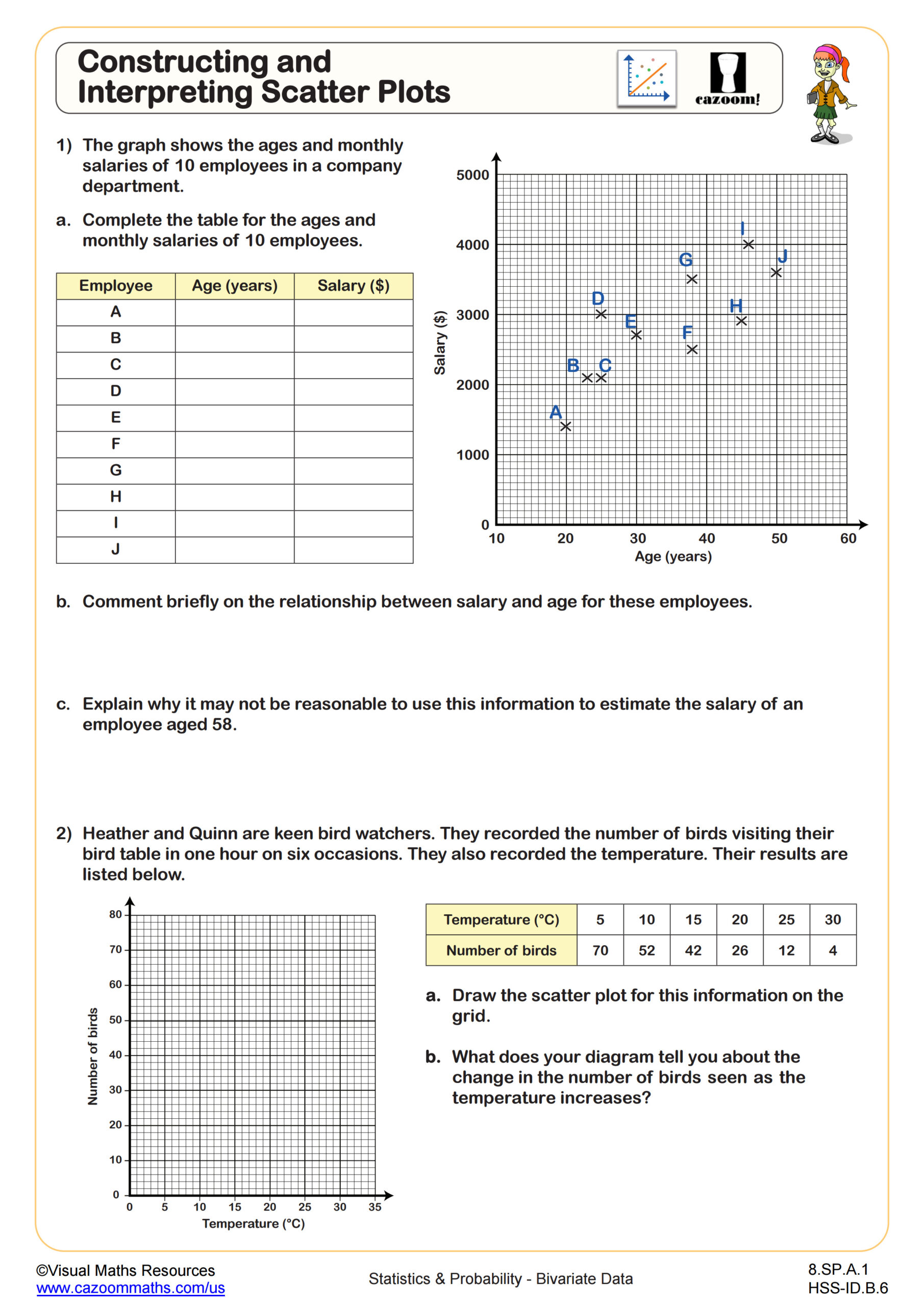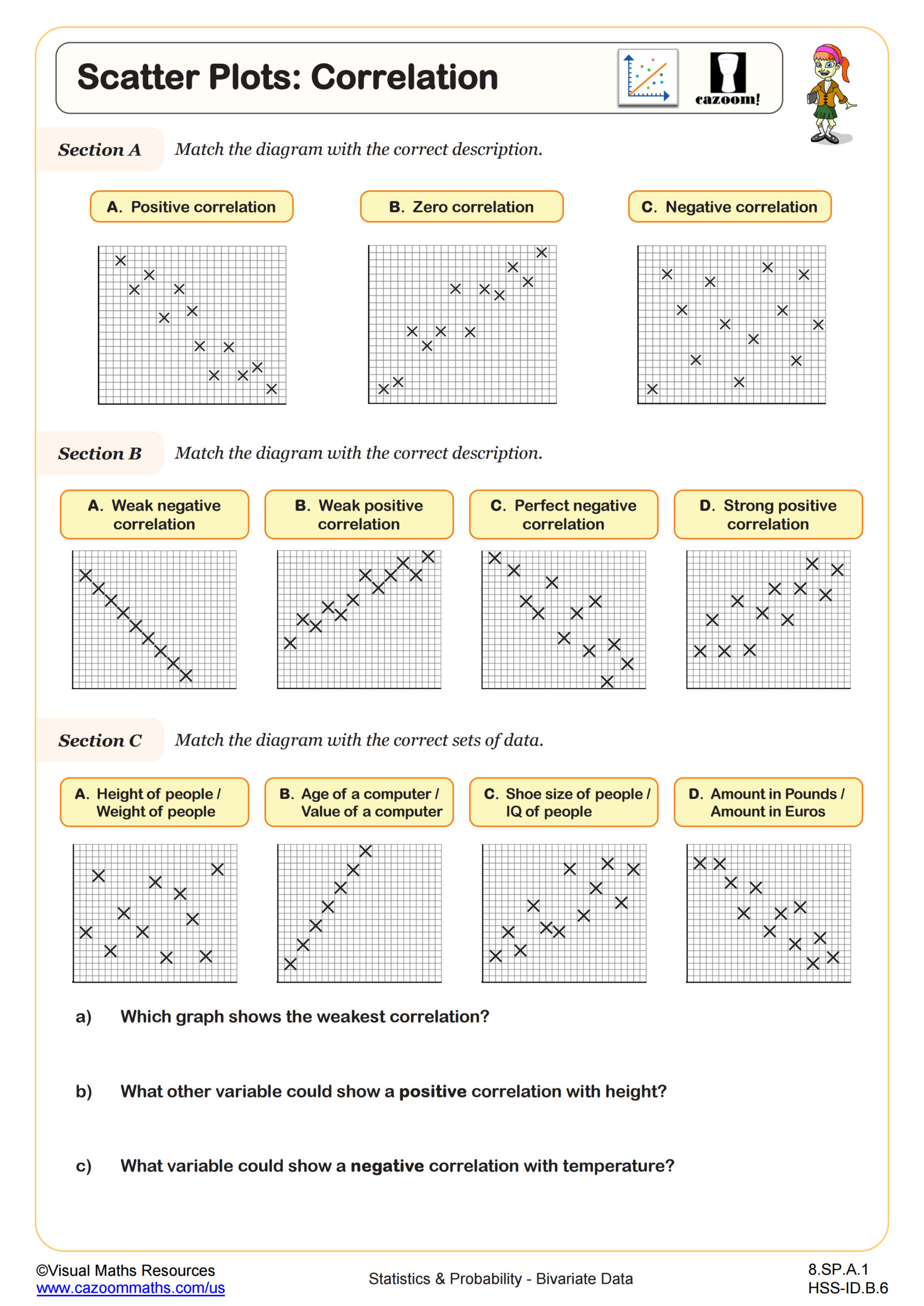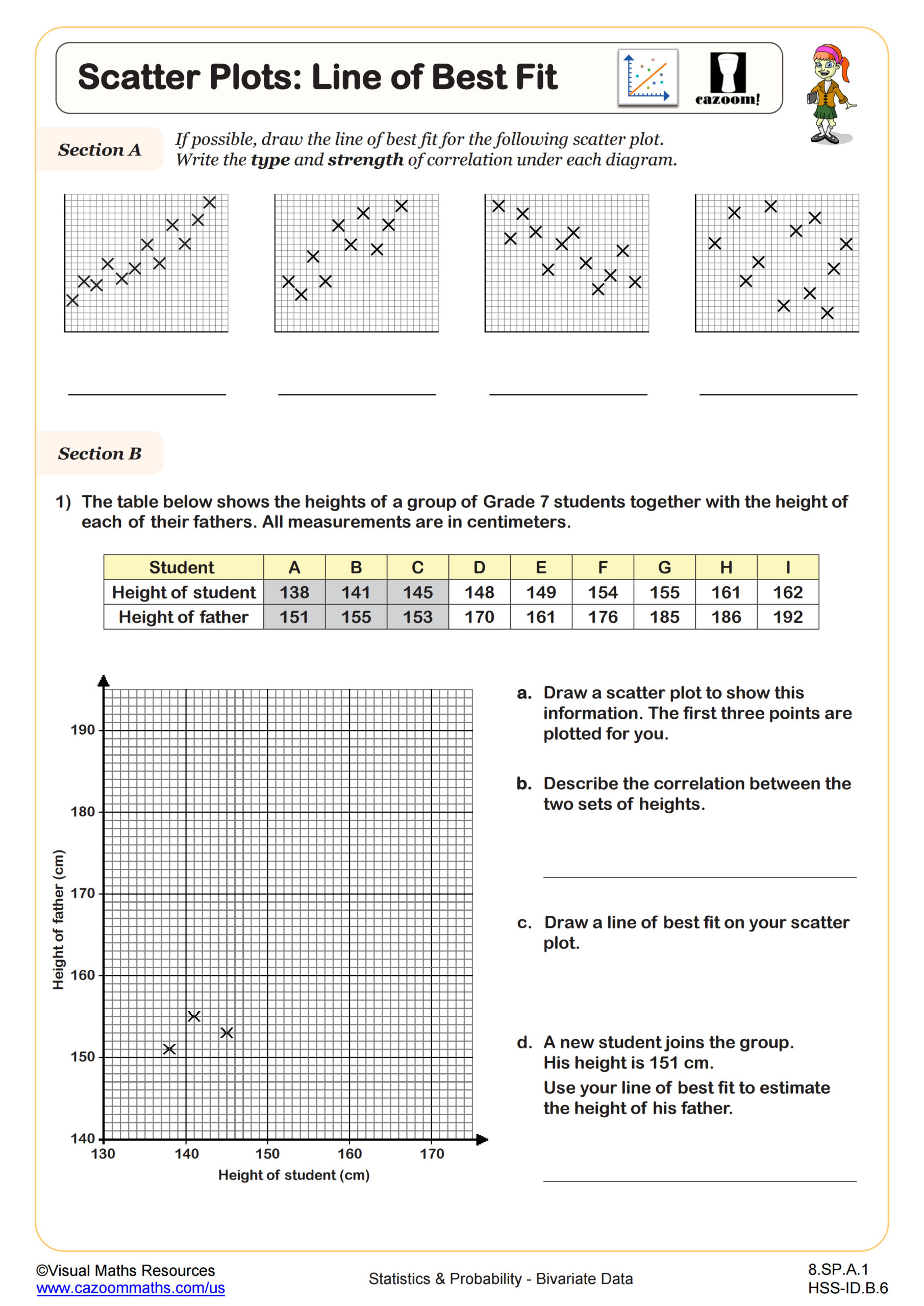Scatter Graphs Math Worksheets with Answers
Printable PDF Scatter Plot Worksheets with Answer Keys
Download our printable PDF scatter plot worksheet with answers pdf resources to give students the push they need when learning different concepts of statistics equations. Our math experts have specifically curated these resources in a way that your students can master the worksheet using simple statistics equations with clear and easy-to-understand instructions. Hence, our statistics resources are great for building a sense of basic statistical problems, graphs, algebraic equations and early problem-solving skills.
What Is a Scatter Graph in Math?
A scatter graph, also known as a scatter plot, is a graph that shows the relationship between two variables using points. Each point represents one item of paired data (like number of hours studied and test score). By looking at the graph, students can see patterns and determine if the two things are connected. If the points go upward, the relationship is positive. If they go down, it’s negative. If the points are scattered randomly, there’s no correlation. Scatter plots are a key part of data analysis in statistics.
Scatter Plots and Bivariate Data – Relationship, Similarities, and Differences
Bivariate data is data that involves two variables, while scatter graphs are a way to visually display that data. Both focus on showing relationships between two sets of values—like hours studied and test scores. Scatter graphs help students spot trends such as positive, negative, or no correlation, making bivariate data easier to understand. The main difference is that bivariate data refers to the actual values, while scatter graphs are the visual tool used to analyze and explain those values. Together, they help students explore patterns and make predictions based on real data.
Benefits of Learning with Scatter Graph Worksheets
Working with scatter graphs helps students:
• Visualize and understand data relationships
• Practice analyzing trends and patterns
• Improve graphing accuracy and interpretation
• Build confidence in solving word problems using data
• Prepare for standardized tests that include statistics questions
Our worksheets use simple layouts and real-life examples to make learning fun and practical.
Real-Life Uses of Scatter Graphs
Scatter plots are used in many fields—from sports and fitness to business and science. For example, tracking hours spent exercising and calories burned helps people see if one affects the other. Students might also explore data like height vs. shoe size, or study time vs. grades. Our worksheets show how these skills apply in everyday life and help students become better problem solvers.
What Should Students Know Before Learning Scatter Graphs?
Before using scatter graphs, students should:
• Know how to plot points on a coordinate grid
• Understand x- and y-axes
• Be able to read data tables
• Recognize number patterns
These foundational skills prepare students to explore how two variables relate in a graph.


